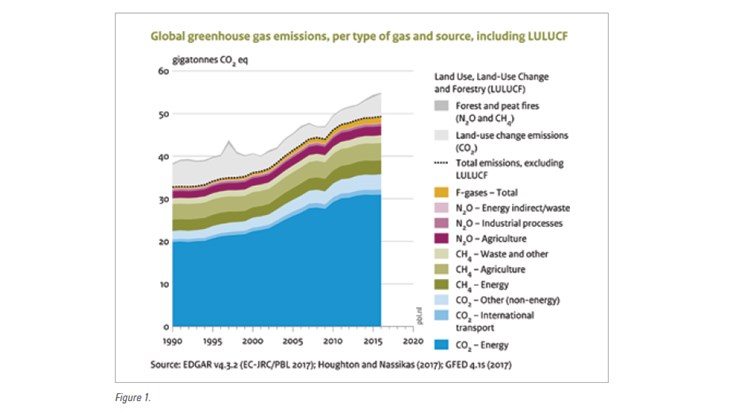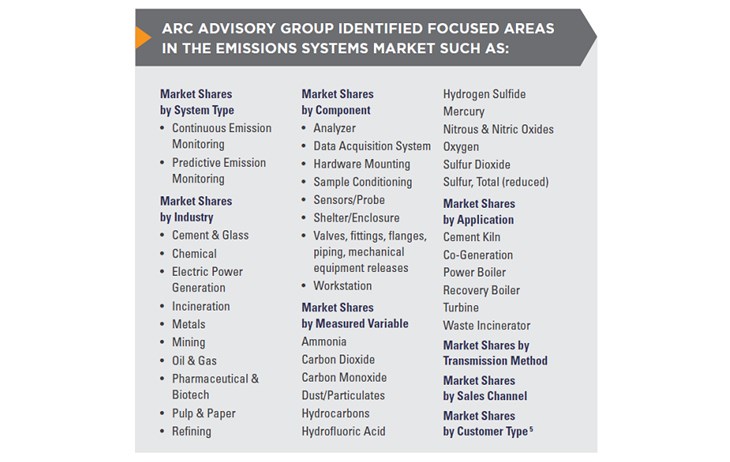As quoted by United Nations, “Climate change is the defining issue of our time and we are at a defining moment. From shifting weather patterns that threaten food production, to rising sea levels that increase the risk of catastrophic flooding, the impacts of climate change are global in scope and unprecedented in scale. Without drastic action today, adapting to these impacts in the future will be more difficult and costly.”4
Further, the National Public Radio Inc. USA quoted the following: “Key portions of the Kyoto Protocol are set to expire at the end of 2012. But many of the world’s major greenhouse gas emitters have already set national targets to reduce emissions, and they are forging their own initiatives to meet those goals.”10
Some groups are focusing on curbing deforestation and boosting renewable energy sources. Several nations are experimenting with cap-and-trade plans, which involves regulators setting mandatory limits on industrial emissions. However companies that exceed those caps can buy permits to emit from companies that have allowances to spare.
“In general, the emission monitoring systems market is directly impacted by emission regulations, which are the most important factors contributing to growth. Worldwide, this market is growing rapidly due to increased regulations,” as quoted by Arc Advisory Group.5
The past year has been marked by rising rig counts, rising oil prices, and rising oil and gas production. Engineering and Procurement companies are producing hydrocarbons more efficiently than ever before and
are primed to capitalize on favorable crude prices, with OPEC’s cooperation. This means rising emissions, as shown in Figure 1.6
Keeping in mind the EPA has national emission standards for benzene waste operations under ruling 40CFR part 61, this action amends the national emission standards for hazardous air pollutants (NESHAP) for benzene waste operation. The amendments add an exemption for organic vapors routed to the fuel gas system and a new compliance option for tanks, and clarify the standards for containers.
Industries such as chemical manufacturing plants, petroleum refineries, coke by-product recovery plants, and commercial hazardous wastewater treatment, storage (tanks), and disposal facilities that treat, store,
dispose or manage waste generated by these industries will be affected. However, the federal government, state/local/tribal governments will not be affected.
Further, the new compliance option allows tanks to be located inside a permanent total enclosure that routes organic vapors through a close-vent system to an enclosed combustion control device.
While facilities that request that the benzene waste exempt organic vapors from a waste management unit, treatment process, or wastewater treatment system that are routed to a fuel gas system with the exemption, a facility can route the waste gas stream to the fuel gas system to reuse gases as a fuel for heaters, furnaces, boilers, incinerators, gas turbines, or other combustion devices. Because the gas stream goes into the general fuel gas system where it mixes with other fuel gases, it is not possible to specify which particular combustion device ultimately receives the waste stream gases. For that reason, the exemption allows the use of any control device (enclosed combustion unit) connected to the fuel gas system and does not require the owner or operator to specify a specific control device.9
*To read the full article, see the September issue of Fugitive Emissions Journal!
REFERENCES
1. “Air Monitoring, Measuring, and Emissions Research.” EPA, Environmental Protection Agency, 5 June 2019, www.epa.gov/air-research/airmonitoring-measuring-and-emissions-research.
2. Benzene Neshap Faq Handbook for Subparts Bb and Ff. Bibliogov, 2012.
3. “Benzene Waste Operations: National Emission Standards for Hazardous Air Pollutants.” EPA,
Environmental Protection Agency, 3 Apr. 2019, www.epa.gov/stationary-sources-air-pollution/benzenewaste- operations-national-emission-standardshazardous-air.
4. “Climate Change.” United Nations, United Nations, www.un.org/en/sections/issues-depth/climatechange/.
5. “Emission Monitoring Systems Market Size, Trends, Analysis, Forecast to 2017: ARC Advisory Group.”
Market Size, Trends, Analysis, Forecast to 2017| ARC Advisory Group, www.arcweb.com/market-studies/ emission-monitoring-systems.
6. “Global Greenhouse Gas Emissions, per Type and Gas and Source, Including LULUCF.” Ga Naar De
Nederlandse Taal, www.pbl.nl/en/infographic/global-greenhouse-gas-emissions-per-type-andgas-and-source-including-lulucf.
7. Kohout, et al. “Current Emission Trends for Nitrogen Oxides, Sulfur Dioxide, and Volatile Organic Compounds by Month and State: Methodology and Results.” Current Emission Trends for Nitrogen Oxides, Sulfur Dioxide, and Volatile Organic Compounds by Month and State: Methodology and Results (Technical Report) | OSTI.GOV, 1 Aug. 1990, www.osti.gov/biblio/5627059.
8. “Mercury Emission Trend Influenced by Stringent Air Pollutants Regulation for Coal-Fired Power Plants in Korea.” Atmospheric Environment, Pergamon, 12 June 2009, www.sciencedirect.com/science/article/pii/S1352231009004993.
9. “National Emission Standard Benzene Waste Operations.” Federal Register, 12 Nov. 2002, www.federalregister.gov/documents/2002/11/12/02-28499/national-emission-standard-benzene-wasteoperations.
10. “Past and Future Ozone Trends in California’s South Coast Air Basin: Reconciliation of Ambient Measurements with Past and Projected Emission Inventories.” Taylor & Francis, www.tandfonline.com/doi/full/10.1080/10962247.2012.735211.
11. Staff, NPR News. “What Countries Are Doing To Tackle Climate Change.” NPR, NPR, 9 Dec. 2011, www.npr.org/2011/12/07/143302823/what-countriesare-doing-to-tackle-climate-change.



